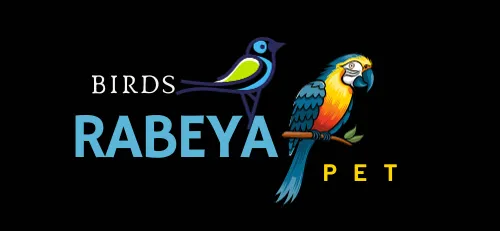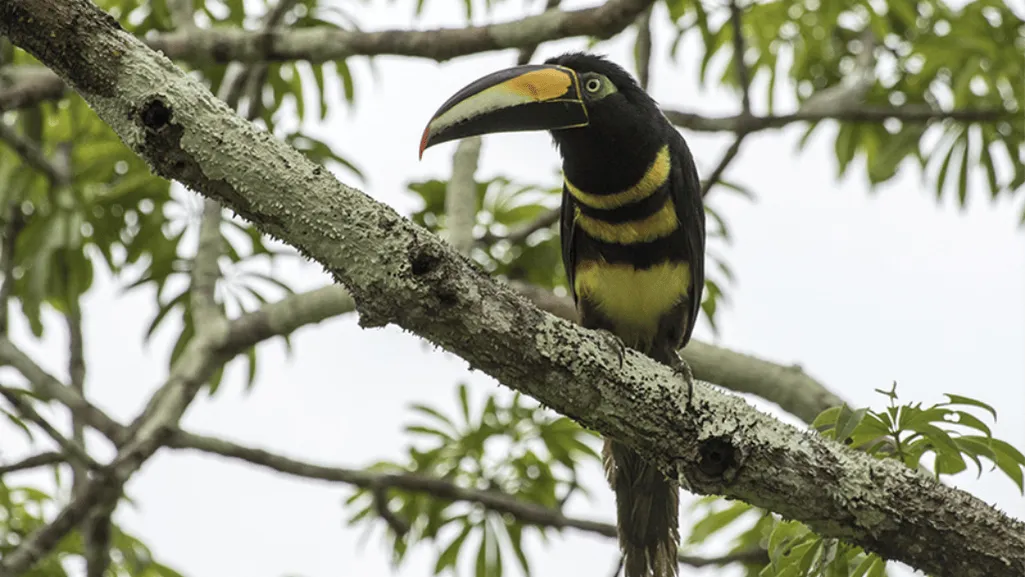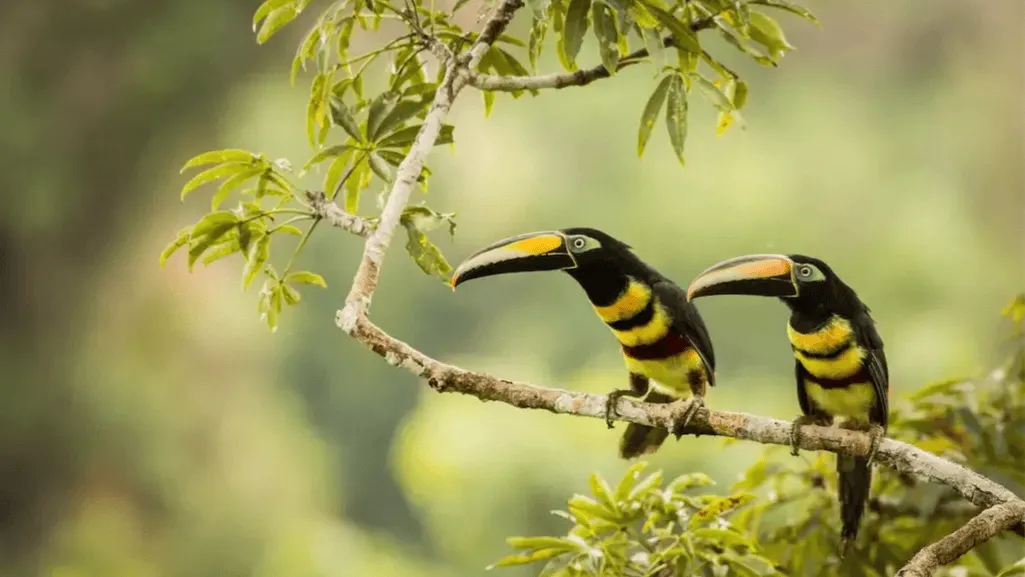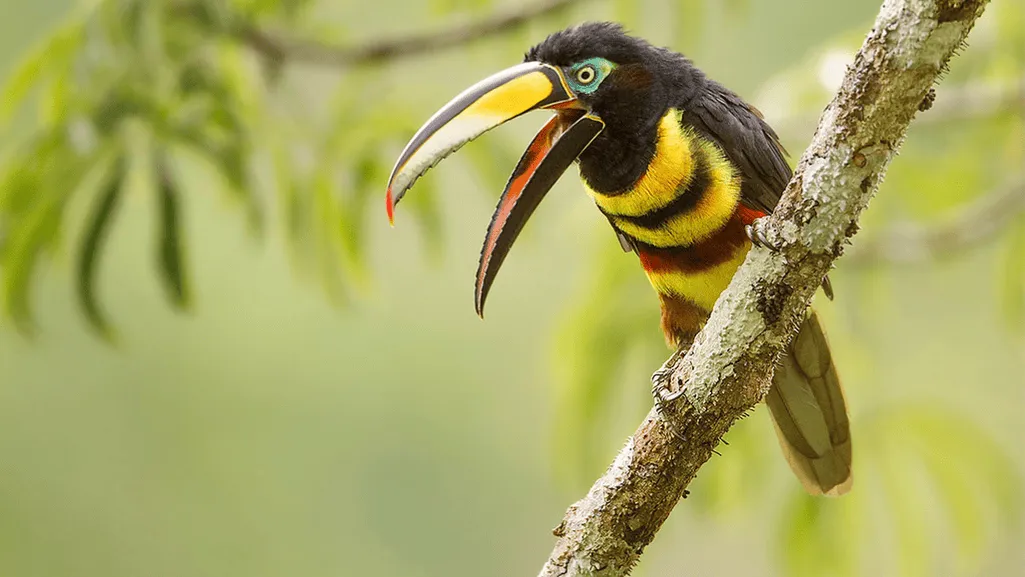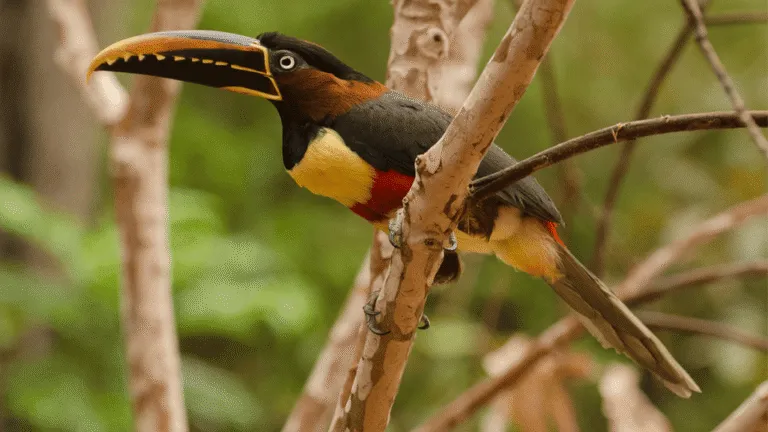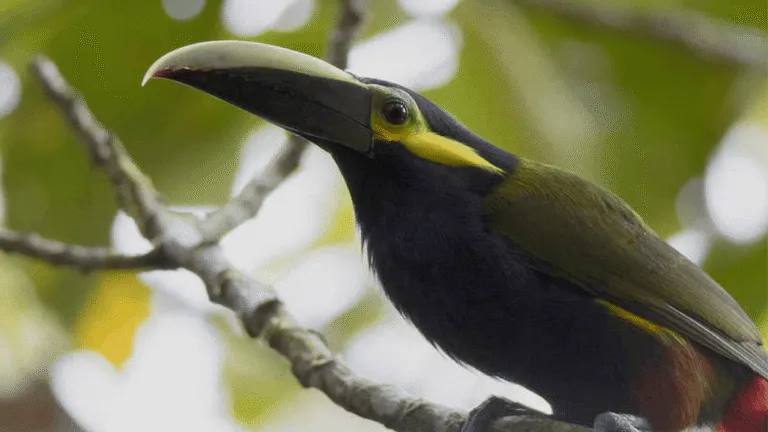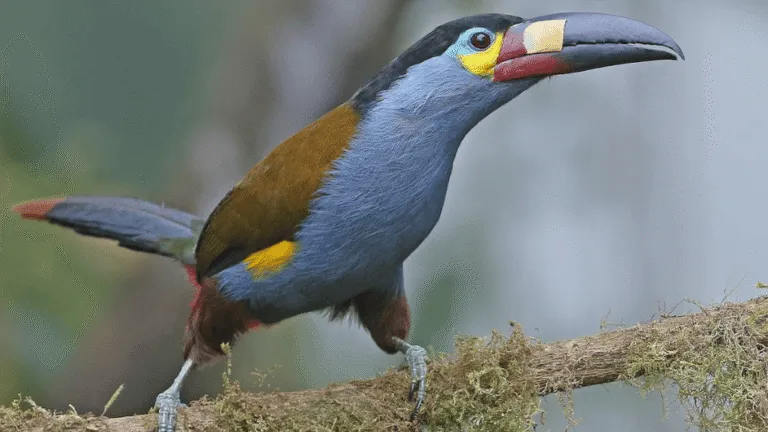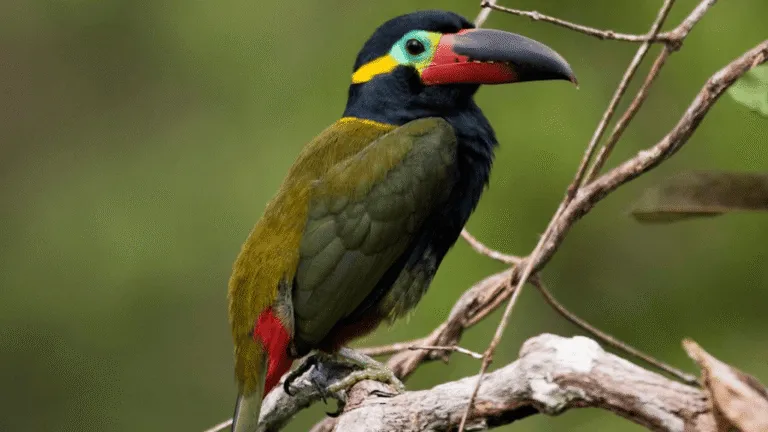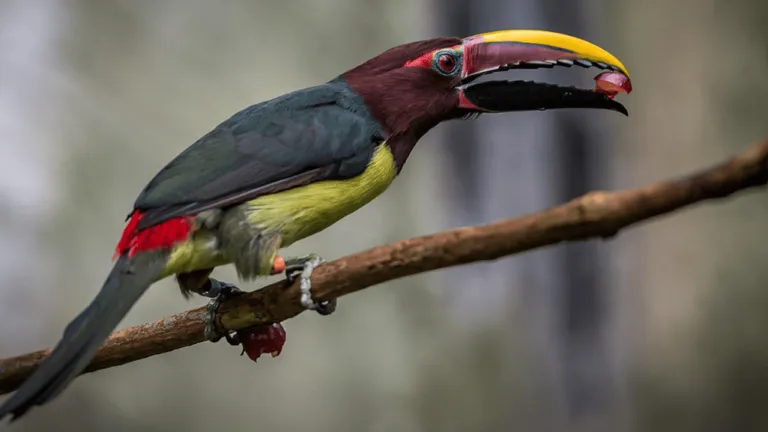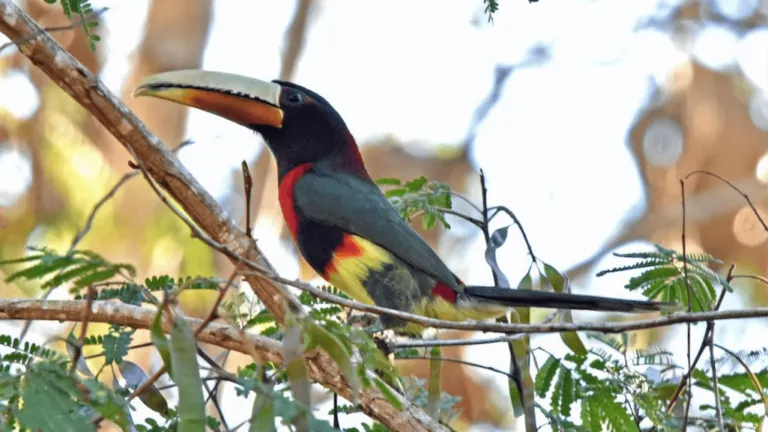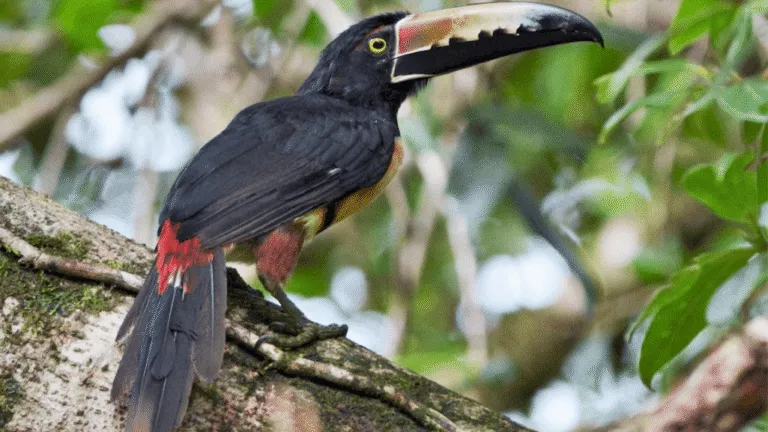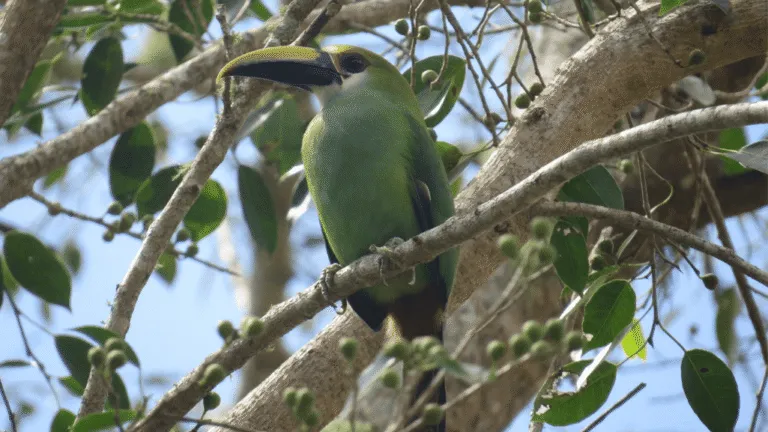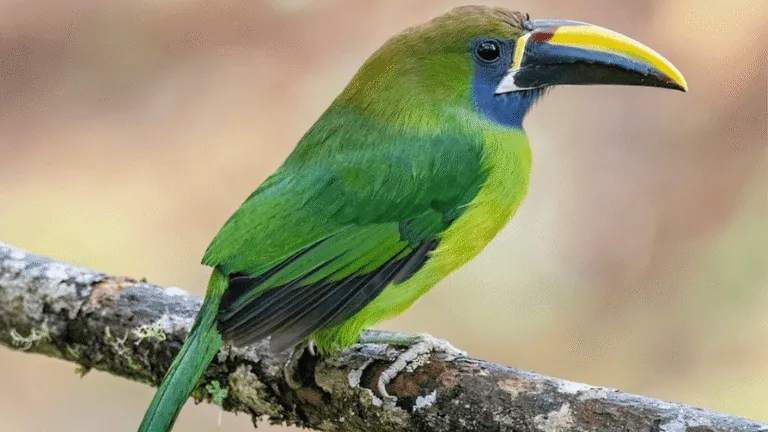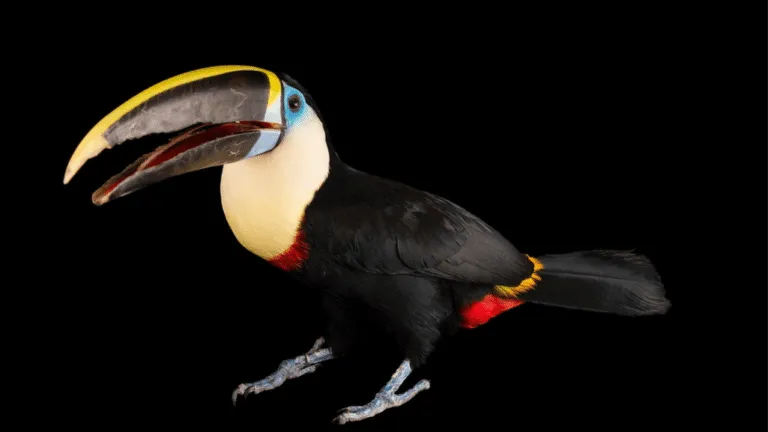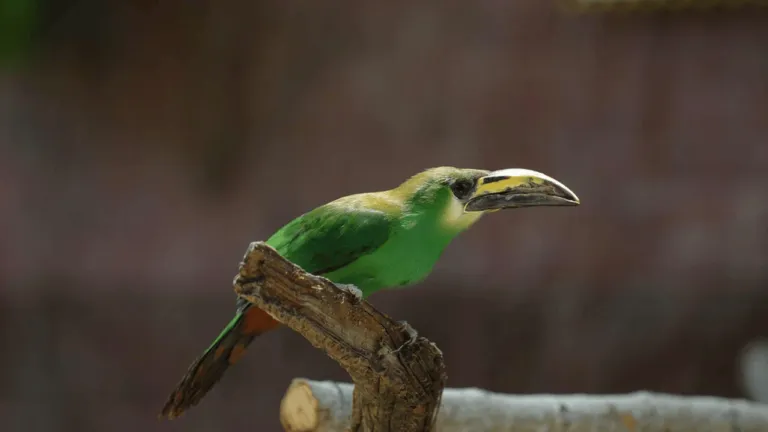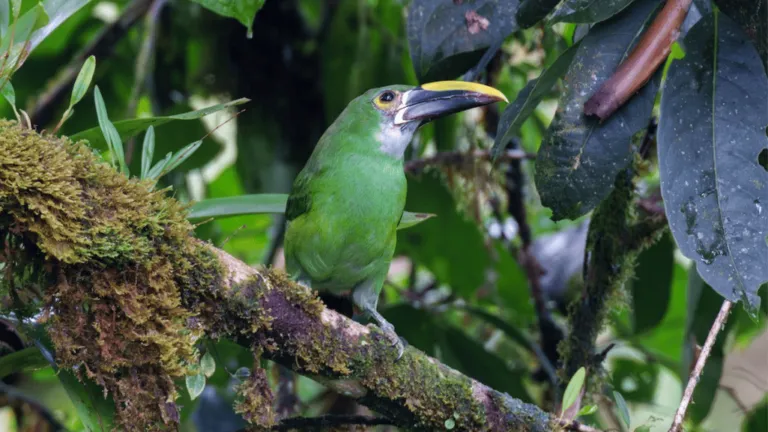Welcome to our comprehensive guide on the Many banded Aracari pteroglossus pluricinctus, also known by its scientific name, Pteroglossus pluricinctus. This exquisite bird belongs to the toucan family Ramphastidae and is native to South America. With its vibrant colors and unique characteristics, the many-banded aracari is an exotic bird that has captivated the hearts of bird enthusiasts worldwide.
The many-banded aracari can be found in countries such as Brazil, Colombia, Ecuador, Peru, and Venezuela. As the only species within its genus, it showcases its distinct features in its habitat. This stunning bird measures around 43 to 46 cm in length, including its impressive bill, which spans approximately 11 to 12.5 cm long.
Key Takeaways:
- The many-banded aracari, or Pteroglossus pluricinctus, is an exotic bird of the Aracari species found in South America.
- With its colorful plumage and unique characteristics, it has become a beloved sight for bird enthusiasts.
- The many-banded aracari primarily inhabits terra firme forest, várzea, and gallery forests, usually up to 750 m in elevation.
- Adult males display a striking appearance with a black head, throat, and neck, complemented by blue-green to green skin around the eye and a chestnut patch behind it.
- Its back is adorned in dark green, while the rump is vibrant red and the underparts showcase a stunning combination of yellow, black, and red bands.
Taxonomy and Description of the Many-banded Aracari
https://www.youtube.com/watch?v=17jeTZye4GU
The many-banded aracari, a magnificent bird native to South America, is scientifically classified under the taxonomic classification:
- Domain: Eukaryota
- Kingdom: Animalia
- Phylum: Chordata
- Class: Aves
- Order: Piciformes
- Family: Ramphastidae
- Genus: Pteroglossus
With its striking physical description and vibrant appearance, the many-banded aracari is a sight to behold. It features a black head, throat, and neck, beautifully contrasted by blue-green to green skin around the eye and a chestnut patch behind it.
The back of the many-banded aracari is adorned with a captivating dark green hue, while the rump flaunts a vibrant shade of red. Its underparts display an intricate pattern of yellow with black and red bands, adding to its allure.
The bill of the many-banded aracari is equally captivating. It boasts an orange-yellow line at its base, with the maxilla being orange-yellow and the mandible strikingly black.
| Physical Description | Appearance |
|---|---|
| Black head, throat, and neck | Blue-green to green skin around the eye with a chestnut patch behind it |
| Dark green back | Red rump |
| Yellow underparts with black and red bands | Orange-yellow line at the base of the bill |
| Orange-yellow maxilla and black mandible |
Distribution and Habitat of the Many-banded Aracari
The many-banded aracari is a colorful bird found in various regions of South America. Its distribution range includes northeastern Colombia, northwestern and southeastern Venezuela, eastern Ecuador, northeastern Peru, and northwestern Brazil. Within these countries, the bird can be observed in its natural habitat.
The many-banded aracari is specifically adapted to thrive in different types of forests. It primarily inhabits terra firme forest, which refers to the tropical rainforest on non-flooded land. Additionally, it can also be found in várzea forests, which are floodplain forests, and gallery forests, which are narrow strips of forest along rivers or streams.
With its broad distribution range, the many-banded aracari can be encountered in a variety of habitats. From dense rainforests to lush floodplain forests, these birds have adapted to diverse ecological settings.
Comparison of Habitat Types
| Habitat Type | Description |
|---|---|
| Terra Firme Forests | Tropical rainforests on non-flooded land |
| Várzea Forests | Floodplain forests that are periodically flooded |
| Gallery Forests | Strips of forest along rivers or streams |
These different habitat types offer the many-banded aracari a range of resources and shelter. From the canopy of the rainforest to the water’s edge, this bird has adapted to various niches within its ecosystem.
many banded aracari pteroglossus pluricinctus
The many-banded aracari, a colorful and captivating bird, exhibits interesting behavior and feeding habits in its natural habitat. This section explores its movement patterns, feeding preferences, and its role in seed dispersal.
Movement Patterns
The many-banded aracari is believed to be a year-round resident in its range, showcasing consistent behavior throughout the seasons. It is often seen foraging singly, in pairs, or in small groups, confidently navigating the forest canopy.
Feeding Preferences
The diet of the many-banded aracari mainly consists of fruits and nuts, which form a significant portion of its feeding habits. It shows a particular fondness for various fruits found in its habitat. Additionally, the bird supplements its diet with insects, small birds and bird eggs, and even lizards, showcasing its adaptability and opportunistic feeding behavior.
The many-banded aracari’s feeding behavior is essential for maintaining the ecological balance of its habitat. As it feeds on fruits, it often swallows the seeds whole. Later, during regurgitation, it aids in seed dispersal, allowing seeds to be deposited in different locations, thus contributing to the reproduction and diversity of plant species in the forest ecosystem.
Role in Seed Dispersal
The many-banded aracari plays a crucial role in the movement and dispersal of seeds within its habitat. By consuming fruits and regurgitating seeds, it helps in the dispersal of fruits and seeds over considerable distances, ranging from hundreds of meters. This behavior enhances the chances of successful plant reproduction, facilitates forest regeneration, and contributes to the overall health and diversity of the ecosystem.
Understanding the behavior and feeding habits of the many-banded aracari not only enriches our knowledge of this exquisite bird but also highlights the importance of its role in the intricate web of life in South American forests.
| Feeding Habits | Movement Patterns | Seed Dispersal |
|---|---|---|
| Fruits and nuts | Year-round resident | Contributes to seed dispersal |
| Insects | Forages singly, in pairs, or in small groups | Regurgitates seeds |
| Small birds and bird eggs | Navigates the forest canopy with confidence | Aids in the dispersal of fruits over long distances |
| Lizards |
Reproduction and Breeding Season of the Many-banded Aracari
Reproduction plays a vital role in the life cycle of the many-banded aracari. This section explores the breeding season, eggs, and parental care of this fascinating bird.
Breeding Season
The many-banded aracari’s breeding season varies depending on its location. In Colombia and Ecuador, it is believed to occur between November and March, while in the rest of its range, the breeding season usually takes place from March to October.
Eggs and Nesting Behavior
Although information on the breeding biology of the many-banded aracari is limited, it is known that the female lays two to four white eggs in a tree cavity. These cavities are often abandoned woodpecker’s nests, providing a safe and secure environment for the eggs to develop.
Parental Care
Both the male and female aracari take part in the incubation of the eggs, sharing the responsibility of keeping them warm and ensuring their successful development. Once the eggs hatch, both parents actively participate in feeding and raising the chicks.
After approximately 40 days, the young aracaris reach their fledgling stage, ready to explore the world outside the nest and embark on their own journey in the forest canopy.
Vocalization and Status of the Many-banded Aracari
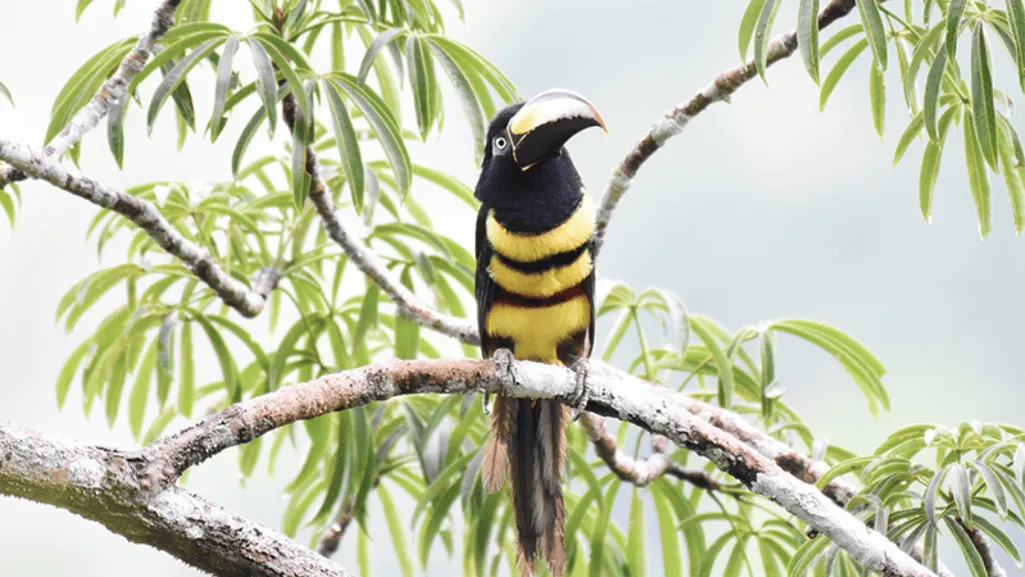 The many-banded aracari is known for its distinct vocalizations, which include various calls such as “seeent,” “seeet,” “see-yeet,” “kyseek,” and “kyeek.” These vocalizations serve as a means of communication within their social groups and territory demarcation.
The many-banded aracari is known for its distinct vocalizations, which include various calls such as “seeent,” “seeet,” “see-yeet,” “kyseek,” and “kyeek.” These vocalizations serve as a means of communication within their social groups and territory demarcation.
As for its conservation status, the many-banded aracari is currently classified as Least Concern on the IUCN Red List. This classification indicates that the bird is not currently threatened with extinction. However, it is important to note that the population size of the many-banded aracari is not well-documented and is believed to be decreasing. Conservation efforts are crucial to ensure the long-term survival of this species.
The Many-banded Aracari’s Vocalizations
| Vocalization | Description |
|---|---|
| Seeent | A short, rhythmic call often repeated multiple times in quick succession. |
| Seeet | A high-pitched call with a sharp and clear tone. |
| See-yeet | A combination of two distinct calls, starting with a shorter “see” followed by a longer “yeet.” |
| Kyseek | A nasal call with a unique pitch, often used during territorial disputes. |
| Kyeek | A soft, melodic call commonly heard during social interactions within the aracari’s group. |
While these vocalizations may vary in tone and pitch, they play a significant role in the aracari’s communication and interaction with other members of its species.
Continued monitoring and research efforts are necessary to gain a better understanding of the many-banded aracari’s population size and its ecological needs. By promoting habitat conservation and raising awareness about this charismatic bird, we can contribute to its long-term survival and protection.
Interesting Facts about the Many-banded Aracari
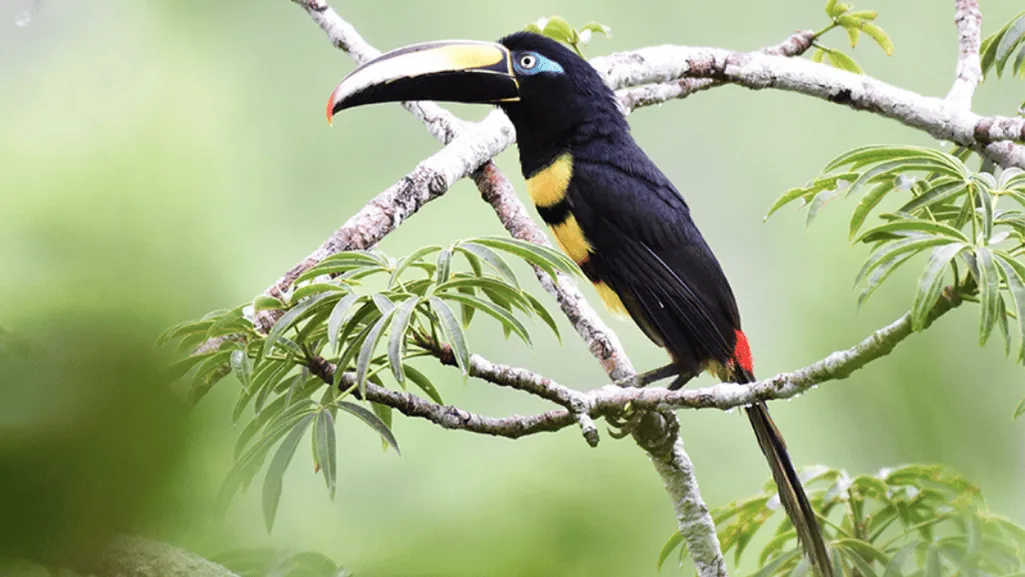 Did you know that the many-banded aracari is one of the largest aracari species? Measuring around 17 inches in length and weighing 8-11 ounces, this colorful bird stands out in the forests of South America.
Did you know that the many-banded aracari is one of the largest aracari species? Measuring around 17 inches in length and weighing 8-11 ounces, this colorful bird stands out in the forests of South America.
One of the most striking features of the many-banded aracari is its vibrant plumage. It boasts a black band across the chest and a black-red band across the belly, adding to its unique appearance.
Aracaris are social birds that live in flocks. They often roost in tree cavities and share sleeping spaces with both adults and fledglings, fostering a sense of community within their group.
Although primarily frugivorous, the many-banded aracari has a diverse diet. In addition to fruits, it also includes insects, small birds and bird eggs, and lizards in its meals, showcasing its adaptability in finding food sources.
While the many-banded aracari has a conservation status of Least Concern, it still requires protective actions and further research to understand its biology and population ecology better. Despite this status, conservation efforts are necessary to ensure the long-term survival of this fascinating aracari species.
Conclusion
The many-banded aracari is undeniably a masterpiece of nature, captivating bird enthusiasts and nature lovers alike with its stunning plumage and unique habitat. As a vibrant resident of the South American forests, this charismatic bird not only adds a splash of color to the canopy but also plays a vital role in seed dispersal, contributing to the health and biodiversity of its ecosystem.
While the population status of the many-banded aracari remains uncertain, it is crucial to prioritize efforts in protecting its habitat and undertaking further research to better understand its biology and ecological importance. By safeguarding the forests it calls home, we can ensure the continued existence of this remarkable species and its invaluable contributions to the natural world.
For bird enthusiasts seeking an extraordinary avian encounter, a many-banded aracari guide is essential. This guide will lead you through the forests of South America, allowing you to marvel at the breathtaking sights and sounds of these captivating creatures. Whether you are an avid birder or simply appreciate the beauty of nature, the many-banded aracari is a species worthy of our admiration and protection.
FAQ
What is the scientific name of the many-banded aracari?
The scientific name of the many-banded aracari is Pteroglossus pluricinctus.
Where is the many-banded aracari found?
The many-banded aracari is found in countries like Brazil, Colombia, Ecuador, Peru, and Venezuela.
What is the physical description of the many-banded aracari?
The many-banded aracari has a black head, throat, and neck, with blue-green to green skin around the eye and a chestnut patch behind it. Its back is dark green, the rump is red, and the underparts are yellow with black and red bands.
What is the habitat of the many-banded aracari?
The many-banded aracari primarily inhabits terra firme forest, várzea, and gallery forests, usually up to 750 m in elevation.
What does the many-banded aracari eat?
The many-banded aracari primarily feeds on fruits, nuts, insects, small birds and bird eggs, and lizards.
When does the many-banded aracari breed?
The breeding season of the many-banded aracari is thought to be between November and March in Colombia and Ecuador, with the rest of its range having a breeding season from March to October.
What is the conservation status of the many-banded aracari?
The many-banded aracari is classified as Least Concern on the IUCN Red List, indicating that it is not currently threatened with extinction.
What are some interesting facts about the many-banded aracari?
The many-banded aracari plays a role in seed dispersal, regurgitating seeds and aiding in the dispersal of fruits over distances ranging from hundreds of meters. It is also known for its vibrant plumage and the fact that it roosts in tree cavities with other adult and fledgling aracaris.

